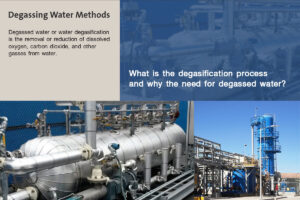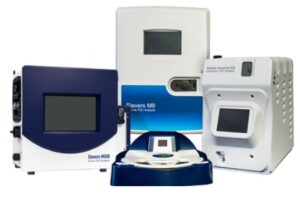

Vacuum deaerators, also known as vacuum degasifiers, use a vertical pressure vessel, multiple vacuum stages and vacuum pumps to continuously remove objectionable gases from liquids
Thermal degasification applies steam heat to remove gasses from a water stream via boiling. It is a physical process that consists of removing the dissolved gases by taking advantage of their insolubility at high temperatures
Membrane degasifiers use a hydrophobic gas permeable membrane to remove dissolved gasses such as oxygen or carbon dioxide from a liquid stream, transferring the gas into a stripping gas or vacuum stream
Chemical degasification uses the injection of chemicals such as sodium bisulfite, hydrazine, or amines to remove dissolved gases from a liquid stream via a chemical reaction
Absorption-based degasification uses a counter-current stripping gas stream to absorb a dissolved gas, removing it from the liquid stream and transferring it to the stripping gas stream. Examples are:
- Packed tower strippers: highest efficiency but prone to fouling
- Sieve tray tower strippers: next highest efficiency; also prone to fouling
- Microbubble strippers (CoStrip): highest fouling resistance
Steam stripping degasification uses high-pressure steam injected at the bottom of a stripping column to remove volatile organic compounds or dissolved gases, such as ammonia, from a liquid stream

Sievers Total Organic Carbon (TOC) Analyzers & Analytical Instruments
Manufacturers need simpler and more efficient analytical testing solutions for quality control and process monitoring. Whether it’s pharmaceutical or semiconductor production, industrial process, environmental, or wastewater monitoring- complex measurements need to be simplified, and compliance cannot be compromised.
